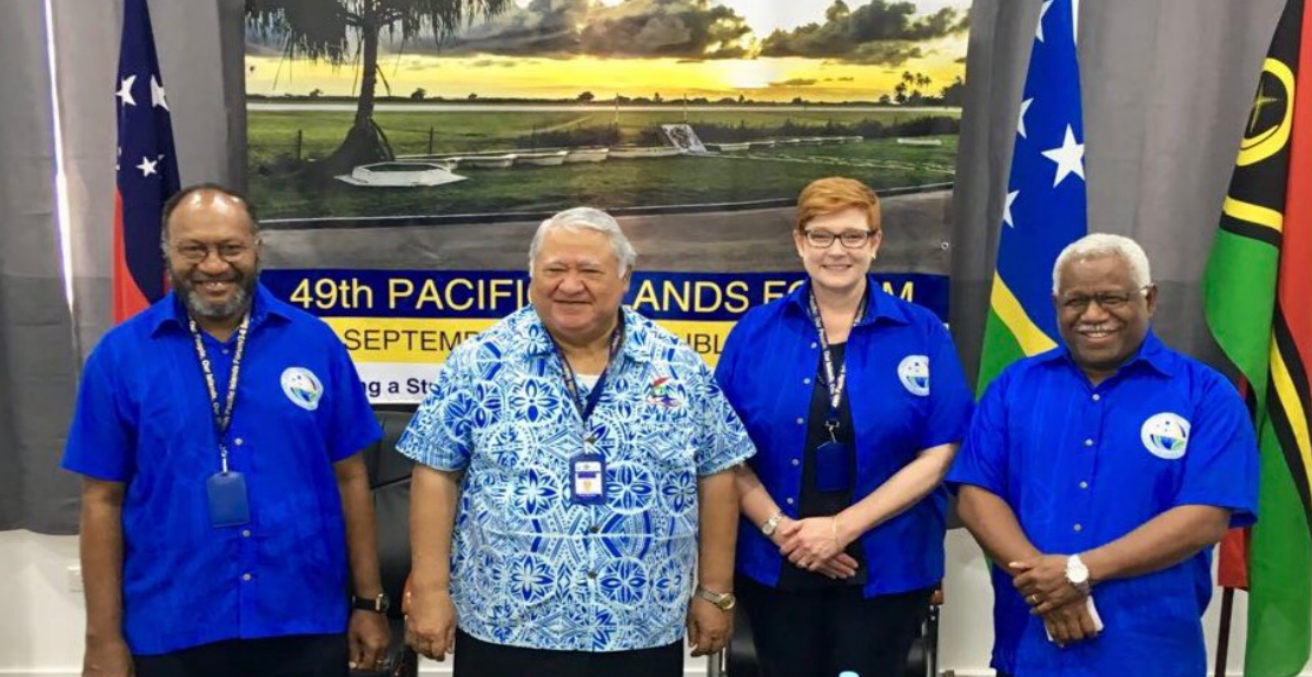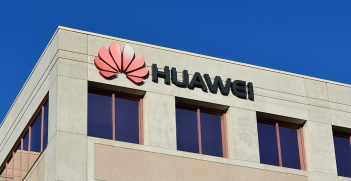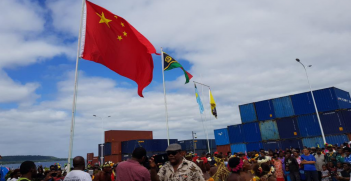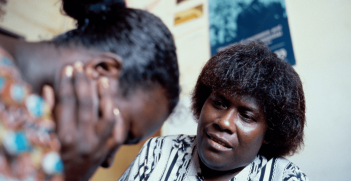Australia’s Pivot to the Pacific

The real test of Australia’s long-term success in the Pacific islands is not how effectively it counters Chinese influence, but how well it can heed and serve the interests of the region.
If the flurry of recent Australian diplomatic and strategic activities are anything to go by, the South Pacific has been firmly set on the national policy agenda, so much so that Canberra appears to be pushing its own “Pivot to the Pacific.”
Two weeks before the opening of 2018 APEC Summit in Papua New Guinea (PNG), the Royal Australian Navy’s landing helicopter dock, HMAS Adelaide, and two patrol boats arrived in Port Moresby. Just days earlier, Australian Prime Minister Scott Morrison and PNG Prime Minister Peter O’Neill signed a deal to jointly redevelop the Lombrum naval base on Manus Island.
Under Malcolm Turnbull’s prime ministership, Canberra rushed to fund an undersea communication cable that will run from the Solomon Islands to Sydney, elbowing Chinese telecom giant Huawei out of the deal. In a similar move, Australia is joining forces with the United States and Japan to prevent Huawei from building a domestic internet cable network in PNG. As well as talking with the Fijian government on the upgrade of Fiji’s Black Rock military base, Canberra is negotiating a security treaty with Vanuatu.
On top of all this, Australia’s aid to the Pacific islands has been dramatically increased from A$1.1 billion in 2017-2018 to A$1.3 billion in 2018-2019, making it the “highest ever contribution” Australia has made in the region. And on Thursday, Prime Minister Scott Morrison announced $3 billion in infrastructure investment in the region.
As Australia vows to step up its engagement with the Pacific, this policy pivot seems unsurprising if not overdue. After all, this part of the world has long been considered Australia’s “special patch”, deserving of special attention.
Yet, like its overall Indo-Pacific strategy, Canberra’s latest attention to the Pacific is focused not so much on the Pacific per se as it is on China’s growing presence in the region.
In the eyes of Australian policy-makers and strategic analysts, the Pacific islands seem little more than a lifeless object, be it a “battleground”, a geopolitical “chessboard”, a “political vacuum”, “our sphere of influence”, “our backyard” or, in the case of Manus Island, a “crucial military jewel in the Pacific crown”. While the region is being taken increasingly seriously, its importance is almost invariably measured against the backdrop of strategic concerns about rising Chinese influence.
As a result, Australia’s Pacific policy is ironically marked by the absence of the Pacific at its core. Its engagement with the region has largely become a means to the end of strategic competition with China.
While Australian politicians do meet with Pacific island leaders, and Australia continues to be the largest donor to the region, what appears missing is a willingness on the part of Australia to listen to the concerns of countries in the region, or to engage with them on their own terms. As Dan McGarry writes in Vanuatu’s Daily Post, too often the “agency of Pacific island nations themselves is conveniently overlooked.”
Following the accusation of Concetta Fierravanti-Wells, then Minister for International Development and the Pacific, that China was funding “roads to nowhere” in the South Pacific, McGarry cautioned that “Australia might want to put down those stones it’s throwing at China and learn a thing or two from its own mistakes first.”
In a speech delivered at the Lowy Institute in August, Samoan Prime Minister Tuilaepa Sailele Malielegaoi said that the big powers are “doggedly pursuing strategies to widen their reach and inculcating a far reaching sense of insecurity”. He complained that there has been “a reluctance to engage in open discussions on the issue and to share information to assist us in decision-making.”
Canberra frequently sounds warnings about the danger of the so-called Chinese “debt-trap diplomacy” in the region, as if “Pacific nations did not know what they were doing.” Yet, on another and arguably more serious existential threat to the region – climate change – Australia has remained largely quiet, prompting Fiji’s Prime Minister to accuse Australia of siding with a “coalition of the selfish”. Seldom does Canberra make the connection that its perceived selfishness might be one of the reasons why alternative partners such as China have been able to gain traction in the region.
Our recent study shows that while Australian observers are overwhelmingly concerned with regional geopolitical rivalry, many Pacific countries, such as Papua New Guinea, have other concerns and priorities, such as infrastructure, economic development, employment and corruption, as well as climate change. Yet these considerations do not seem to be the primary reason behind Australia’s re-engagement with the South Pacific.
Certainly, Australia has every right to be concerned about China, and formulate its policy accordingly. But such a China-centric policy may have some built-in flaws. As Richard Marles, Labor’s defence spokesperson, puts it, “if we are really there because we do not want China to be there, then we will get this wrong”.
A real test of Australia’s long-term success in the Pacific islands lies not in how effectively it counters Chinese influence, but in how well it can heed and serve the interests of the region. Until then, Australia’s Pivot to the Pacific may not go very far.
Chengxin Pan is Associate Professor of International Relations at Deakin University.
Professor Matthew Clarke is the Head of the School of Humanities and Social Sciences at Deakin University.
Sophie Loy-Wilson is a Lecturer in History at the University of Sydney.
This piece draws in part on the authors’ article in the Journal of Contemporary China, entitled “Local Agency and Complex Power Shifts in the Era of Belt and Road: Perceptions of Chinese Aid in the South Pacific.” It is published with permission.





